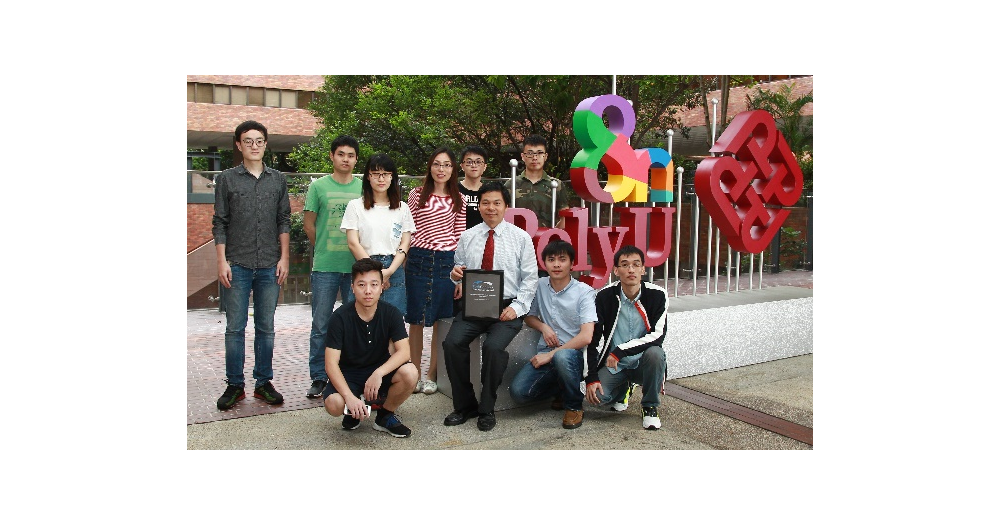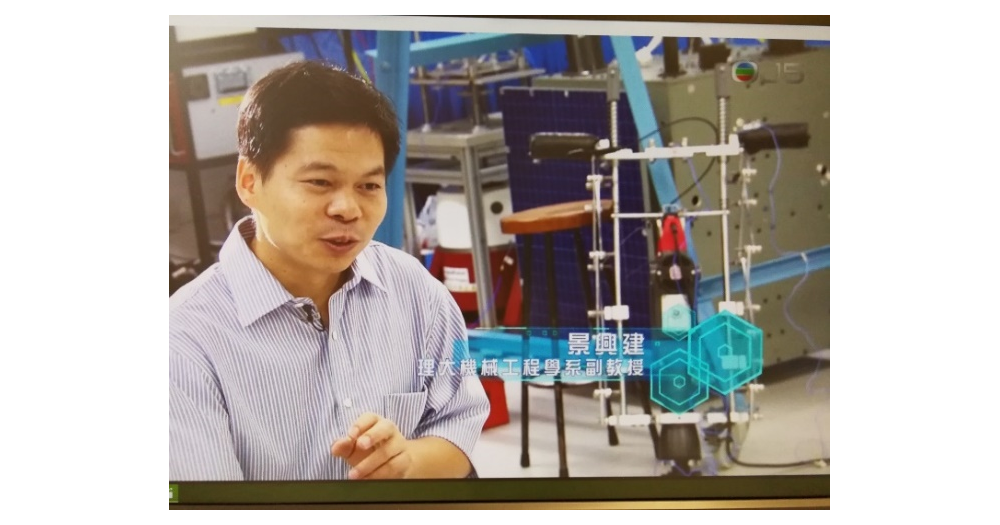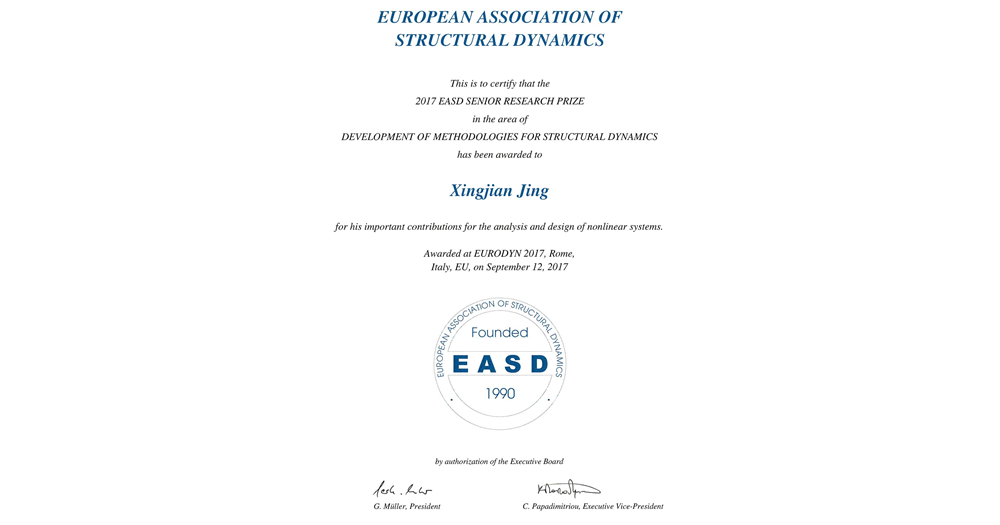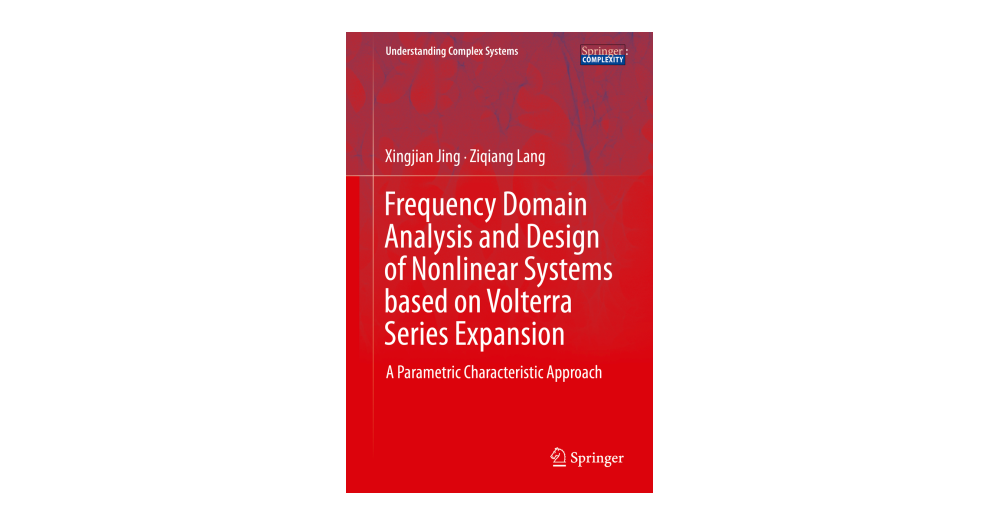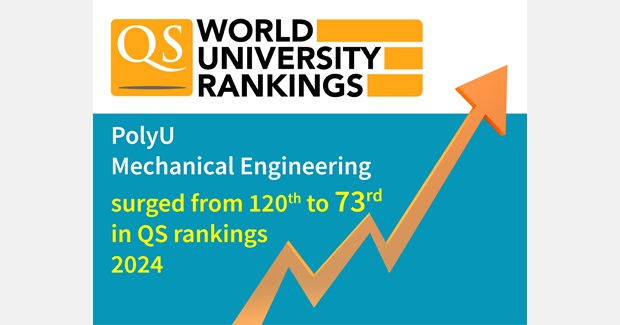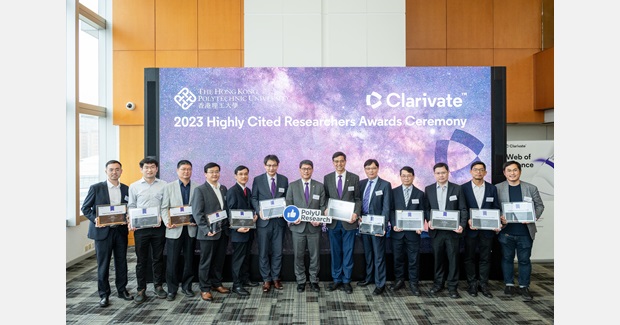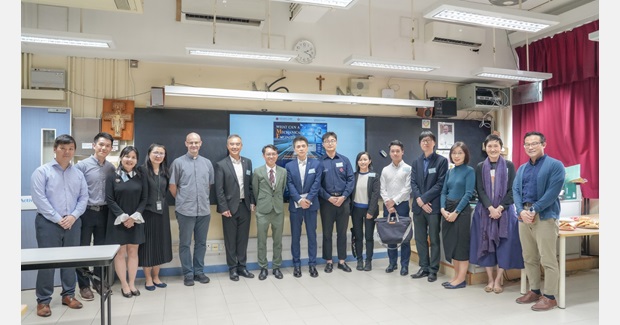PolyU ME staff Dr Xingjian Jing received prestigious EASD senior research award announced in the X international conference on structural dynamics held in Rome Italy during 10-13 Sep 2017. The award ceremony was held in the conference dinner on 12 Sep 2017.
The European Association for Structural Dynamics (EASD) is a professional body founded in 1990. EASD oversees the organization of the European Conferences on Structural Dynamics (EURODYN) that will be held at three (or four) year intervals. The EURODYN Conference has developed into one of the key conferences in structural dynamics. These conferences are devoted to theoretical developments and applications of structural dynamics to all types of structures and structural materials.
The EASD Research Prizes are given in recognition of outstanding and sustained contributions to the following areas:
- Development of Methodologies for Structural Dynamics
- Computational Structural Dynamics
- Applications of Structural Dynamics
In each of those three areas Senior and Junior Prizes, respectively, will be awarded. Dr Jing received the Senior Research Award in the area of development of methodologies for structural dynamics due to “his important contributions for the analysis and design of nonlinear systems”.
In the past 10 years, Dr Jing’s research focuses on nonlinear dynamics/vibration/control and their applications, targeting at employing and exploring nonlinear benefits through development of nonlinear frequency domain theory/methods, nonlinear system identification methods, and bio-inspired systems and approaches, with applications to vibration isolation/control, robust control, sensor technology, energy harvesting technology, fault diagnosis or information mining, and robotics etc.
In nonlinear analysis, design and control, Dr Jing developed a systematic frequency-domain parametric characteristic approach for the analysis and design of nonlinear systems, which has been successfully applied to vibration control, system identification, signal processing and structural health monitoring etc. The parametric characteristic approach presents a clear insight into the analytical structure and expression of the output spectrum of nonlinear systems with respect to model parameters of interest (both linear and/or nonlinear components), frequency variable, and excitation amplitude, subject to any input signals. The method results in a novel nonlinear characteristic output spectrum (nCOS) function or preliminarily referred to as output frequency response function (OFRF), which provides a direct tool for dynamic optimization of nonlinear systems in terms of structural parameters. The first result providing the benchmark technical methods was published in 2006, strengthened in 2007, 2008, 2009, 2012, 2014, and summarized into a monograph in 2015. Most publications are available at https://www.researchgate.net/profile/Xingjian_Jing.
In the past 5 years, for passive design, realization and application of beneficial nonlinear stiffness and damping characteristics in practical systems, Dr Jing’s research group developed a bio-inspired X-shaped structure approach. It has been shown that the X-shaped structures can provide very flexible, adjustable and advantageous nonlinear stiffness and damping characteristics exactly needed in various critical engineering vibration problems in a pure passive manner. The technical innovation received the 2017 TechConnect Innovation Award and extensive attentions from industry. A TVB program focusing on technology innovation (創科導航) presented a specific interview on the related projects and broadcasted on 9 Aug 2017.
You may also like




